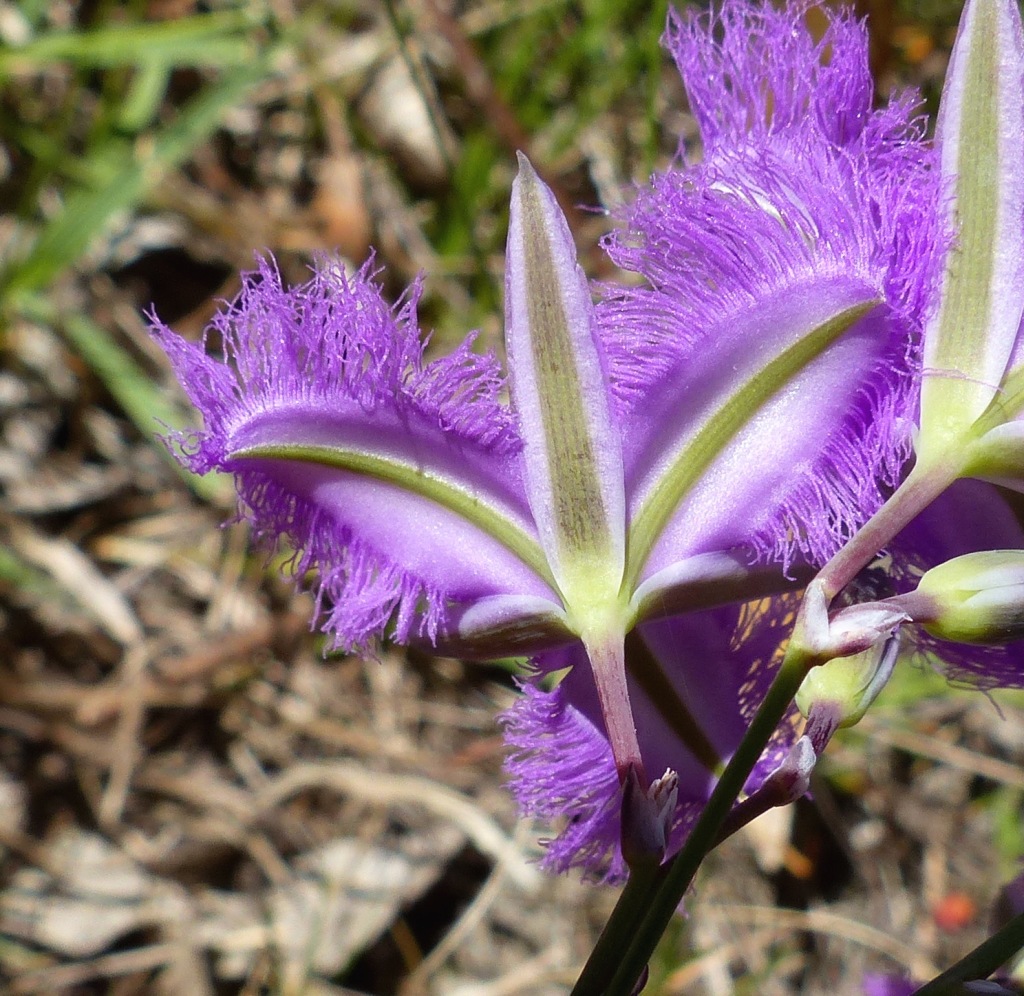Thysanotus
Tufted or shortly rhizomatous perennial herbs. Roots fibrous to tuberous. Leaves annual or perennial, often withering early, sometimes absent. Inflorescence a panicle or raceme, flowers in umbels or single. Flowers bisexual, sepals linear to lanceolate with membranous margins, petals elliptic with fringed margins; stamens 3 or 6, filaments filiform, anthers basifixed, dehiscing by apical pores or longitudinal slits; ovary superior, 3-locular, ovules usually 2 per locule; style filiform, stigma minute, capitate. Fruit a loculicidally dehiscent capsule enclosed by the persistent perianth; seeds arillate, black.
50 species, all Australian, 2 extending to New Guinea and 1 through south-east Asia and north to China; 5 in Victoria.
Conran, J.G. (1994). Liliaceae. In: Walsh, N.G.; Entwisle, T.J., Flora of Victoria Vol. 2, Ferns and Allied Plants, Conifers and Monocotyledons, pp. 637–686. Inkata Press, Melbourne.
 Spinning
SpinningSirisena, U.M.; Macfarlane, T.D.; Conran, J.G. (2013). Thysanotus racemoides (Asparagales: Asparagaceae), a new species form South Australia and western Victoria. Telopea 15: 206–208.



